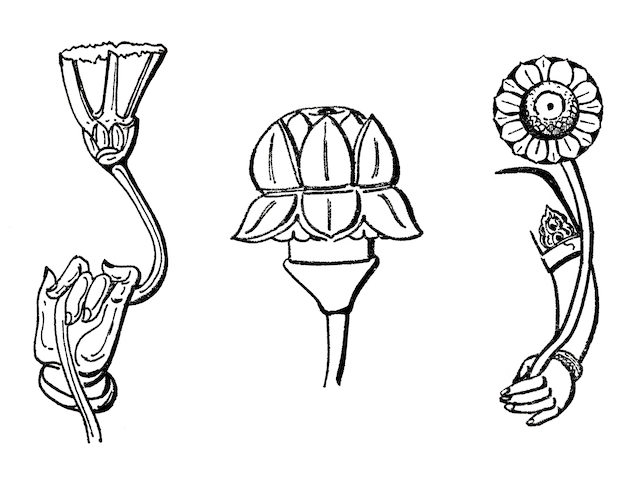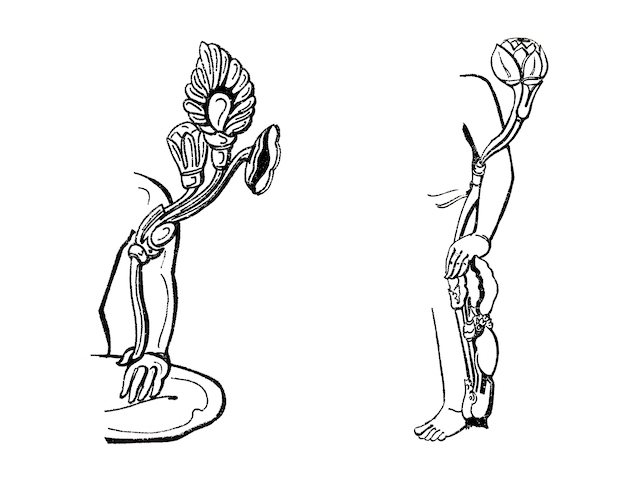padma
Lotus; capital member (doucine) below the phalaka (abacus), shaped like a lotus with petals (also padmam, Tamil: பத்மம்).

Padmam, the petals above and below (Brihadesvara Temple in Thanjavur)
In the Hindu pantheon, the lotus arising from Vishṇu’s navel represents Maṇi — the Earth. Padma also symbolizes water and creation.
The lotus has much importance in Hindu and Buddhist pantheons. It symbolizes self-creation. This is why the Hindu Brahmā sits on a lotus. When the Buddha was born, he took seven steps and immediately lotus flowers sprang up underneath his feet. Every Buddha is ‘Svayambhū’, i.e., self-existent.
The padma or lotus pedestal is indicative of divinity. The Ādi-Buddha manifested himself in the form of a flame arising from a lotus. The lotus also represents the Active Female Principle or in Vajrayāna, the female sex organ.

